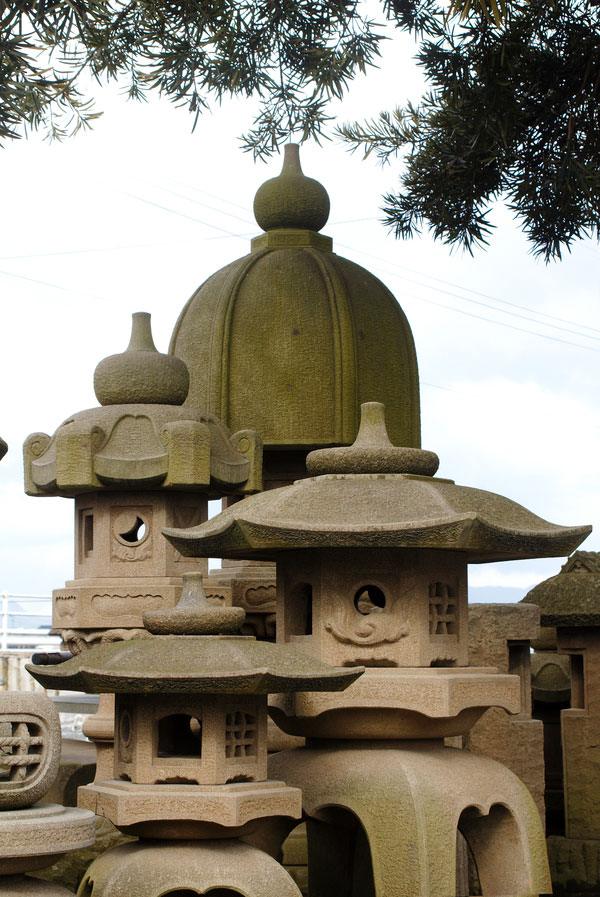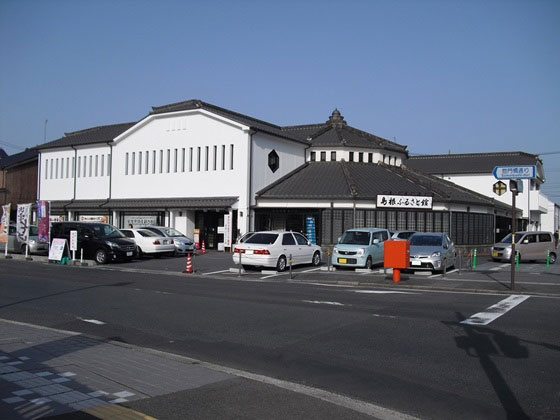 Photo:Shimane Perfecture
Photo:Shimane Perfecture
- Stonework
- Shimane
Izumo stone lanterns Izumo ishidoro
Traditional techniques; soft dreamy light
Mossy stone lanterns quietly blending into Japanese gardens
Description
What is Izumo stone lanterns ?
Izumo stone lanterns are stone lanterns produced in the city of Sakai Minato in the Tottori prefecture, and in the cities of Matsue and Izumo in the Shimane prefecture. They are made of Kimachi stone, fine-grained tuffaceous sandstone quarried from the Kimachi area of Shinji town. Izumo stone lanterns can be distinguished by their deep presence and harmony with traditional Japanese gardens. The Kimachi stone is highly absorbent and moss grows quickly on it. Therefore the stone lanterns seem to absorb the garden's atmosphere and effortlessly blend within the nature. Also, they have long been appreciated as a way of expressing wabi-sabi (beauty within simplicity and imperfection) in the traditional Japanese gardens. After many years, the stone color changes from the freshly quarried bluish gray to a subtle grayish brown. It is said that Sen no Rikyu, an influential master of tea ceremony (1522-1591), was captivated by gardens with Izumo stone lanterns, and so along with the spreading tea ceremony and wabi-sabi culture, the stone lanterns became increasingly popular throughout Japan. In addition to their aesthetic beauty they have good weather resistance to both hot and cold climates, which is why we can still find Izumo stone lanterns that were made in the Edo period (1603-1868) today. With a rich variety of shapes and types numbering around 130 or more, Izumo stone lanterns are widely appreciated even nowadays in Japan.
History
The origin of Izumo stone lanterns dates back to the Nara period (710-794) and Heian period (794-1185) when they were used as lights. In the early days granite was used and later, the Kimachi stone, tuffaceous sandstone formed about 14 million years ago in the Izumo region, started to be used. In the Azuchi Momoyama period (1573-1600), along with the growing popularity of the tea ceremony, Japanese gardens with a wabi-sabi (beauty within simplicity and imperfection) theme were increasingly in vogue, resulting in a demand for attractive stone lanterns in harmony with the garden. During the Edo period (1603-1868), the lord of the Matsue domain saw the economic value in the stone and started using it as construction material in the domain. More importantly, he prohibited the Kimachi stones leaving the domain and restricted quarrying of the stone. This policy protected the local industry and also compelled masons to settle in the area. From the Meiji period (1868-1912) onward, stone lanterns were used not only for landscape architecture, but also for interior decoration, and today, with an increasing demand from overseas, Izumo stone lanterns have earned a high reputation as works of art.
General Production Process
 Photo:Shimane Perfecture
Photo:Shimane Perfecture
- 1. Rough stone Kimachi stone is quarried from a sandstone bed spreading some 10 km east and west from the Kimachi area of Shinji town in the city of Matsue. It is a fine grained easy-to-work tuffaceous sandstone with an attractive color tone which harmonizes well with gardens. Only the finest quality Kimachi stone is used to make Izumo stone lanterns.
- 2. Shaping The quarried rough stone is shaped using such tools as adzes, pickaxes, and chisels. Each piece is carved to emphasize its soft curves and beautiful shapes, taking into account the overall balance of roundness, slopes, edge lines, and other elements.
- 3. Joining The joint sections, apart from the shade and light box, are jointed using round tenons in accordance with a prescribed ratio. The round tenon is a round cylinder of stone which fits into a matching round mortise hole.
- 4. Carving The stone lantern is decorated with engravings. Depending on the pattern or design to be carved, and in accordance with fixed standard dimensions and ratios, a different technique is applied for carving particular patterns. The carving techniques used are embossed carvings, line carvings, openwork, and three dimensional sculptures. The embossed carvings are used for clouds, deers, Japanese maple leaves, dragons, beams, or herons. The line carvings are used for dragons, waves, rope patterns, fans, or pine trees. Openwork is used for half moons, full moons, bats, windows, bottle gourds, double crosses, or interlaced circles, while three dimensional sculptures are used for monkeys or owls.
- 5. Finishing After carving, the surface of the stone lantern is finished with special tools. There are several different finishing techniques, including polishing, stippling, and hammering. To finish the stone texture of the lantern, a style is chosen in accordance with the overall harmony of the piece, for example, smooth, granular, or even line, a shark skin texture, or a rough natural stone finish.
- 6. Overall balance There are many forms for Izumo stone lanterns. Although the lantern shapes may vary, it is important that each lantern is both attractive and well balanced. During the production, the craftsman pays attention to tick the points including gentle curves, well overall balance, and well harmonization blending into nature. Only after the craftsman is assured that the lantern is well balanced, elegant and has an exquisite appearance can the work be given the seal of approval as an Izumo stone lantern.
Where to Buy & More Information
Shimane Bussan Kankokan
 Photo:Shimane Perfecture
Photo:Shimane Perfecture
-
Address
-
Tel.+81-852-22-5758
-
ClosedAround the New Year
-
Business Hours9am to 6pm
-
Website































































































































































































































































































